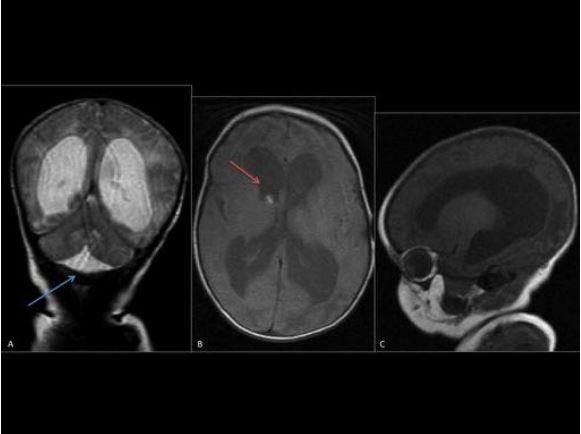ENCEFALOPATÍA HIPÓXICO-ISQUÉMICA (EHI) EN EL RECIÉN NACIDO.
NUESTRA EXPERIENCIA.
Palabras clave:
ENCEFALOPATÍA HIPÓXICO-ISQUÉMICA, poster, seram, EHI, RECIÉN NACIDOResumen
Objetivos Docentes
• Nuestros objetivos en este trabajo son:
◦ Repasar y realizar una casuística de los hallazgos en RM cerebral.
◦ Valorar las secuencias más sensibles.
◦ Comparar los resultados con la literatura existente.
Revisión del tema
INTRODUCCIÓN
La encefalopatía hipóxico-isquémica (EHI) es la causa más frecuente de encefalopatía neonatal. Afecta a 1-2 / 1000 nacidos vivos. Tiene graves consecuencias: en un 10-15 % de los casos presenta un desenlace fatal, en otro porcentaje similar los pacientes presentan parálisis cerebral, y un 40 % de los casos presentan importantes discapacidades motoras y cognitivas.
La EHI se define como el daño difuso o focal cerebral secundario a asfixia perinatal y a los sucesivos eventos fisiopatológicos ocurridos.
Descargas
Citas
•Barkovich AJ, Hajnal BL, Vigneron D, Sola A, Partridge JC, Allen F, Ferriero DM. Prediction of Neuromotor Outcome in Perinatal Asphyxia: Evaluation of MR Scoring Systems. AJNR Am J
Neuroradio 19:143-149, January 1998.
•Barkovich AJ,Westmark K, Partridge C, Sola A, Ferriero DM. Perinatal asphyxia: MR findings in the first 10 days. AJNR Am J Neuroradiol 1995;16(3): 427–438.
•Barkovich AJ, Sargent SK. Profound asphyxia in the premature infant: imaging findings. AJNR Am J Neuroradiol 1995;16:1837–1846.
•Barkovich AJ, Hallam D. Neuroimaging in peri- natal hypoxic–ischemic injury. MRDD Research Reviews 1997; 3:28–41.
•Christine P. Chao, Christopher G. Zaleski, Alice C. Patton. Neonatal Hypoxic-Ischemic Encephalopathy: Multimodality Imaging Findings. RadioGraphics 2006; 26:S159 –S172.
•Manohar M. Shroff, João P. Soares-Fernandes, HilaryWhyte, Charles Raybaud. MR Imaging for Diagnostic Evaluation of Encephalopathy in the Newborn. RadioGraphics 2010; 30:763–780.
•E. Ralph Heinz, James M. Provenzale. Imaging Findings in Neonatal Hypoxia: A Practical Review. AJR 2009; 192:41–47.


